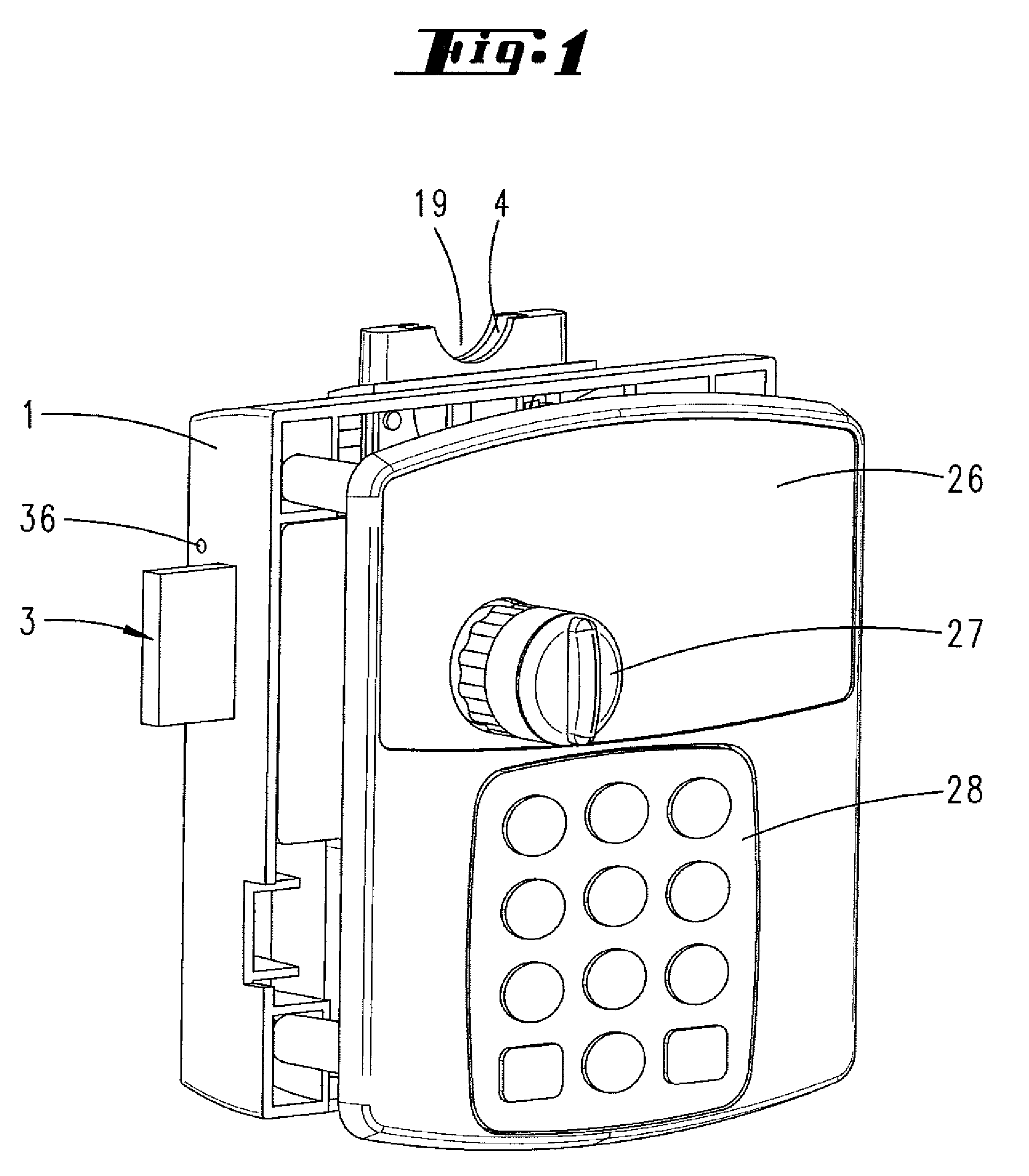Lock for coin deposit container
a technology for storing containers and coins, applied in the field of container locks, can solve the problem that the bolt cannot be moved by the coin, and achieve the effect of preventing the bolt from being moved by the coin
- Summary
- Abstract
- Description
- Claims
- Application Information
AI Technical Summary
Benefits of technology
Problems solved by technology
Method used
Image
Examples
Embodiment Construction
[0019]The container lock shown in the illustrations can be affixed to a container door 25. It comprises a housing 1, which can be affixed to the container door 25 on the inside of the container. The lock comprises a front plate 26, which is affixed on the outside of the door. The front plate 26 comprises a handle 27 by which a crankshaft 24 can be rotated in order to displace a bolt 3 positioned in the housing 1 in a direction that displaces the bolt. The front plate 26 also comprises a scanning field 28 by which a numeric code can be entered.
[0020]A transponder reading device can also be installed in the front plate 26 or in the handle 27 in order to read a transponder. In addition, the lock can also be connected with a fingerprint reading device.
[0021]The housing 1 consists of a synthetic material. The bolt 3 is preferably of metal construction. Found on the underside of the bolt is a blocking slot 30 that forms two blocking steps 31, 34. A blocking extension 32 of a blocking leve...
PUM
 Login to View More
Login to View More Abstract
Description
Claims
Application Information
 Login to View More
Login to View More - R&D
- Intellectual Property
- Life Sciences
- Materials
- Tech Scout
- Unparalleled Data Quality
- Higher Quality Content
- 60% Fewer Hallucinations
Browse by: Latest US Patents, China's latest patents, Technical Efficacy Thesaurus, Application Domain, Technology Topic, Popular Technical Reports.
© 2025 PatSnap. All rights reserved.Legal|Privacy policy|Modern Slavery Act Transparency Statement|Sitemap|About US| Contact US: help@patsnap.com



